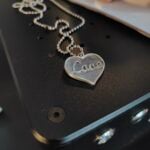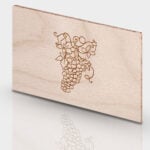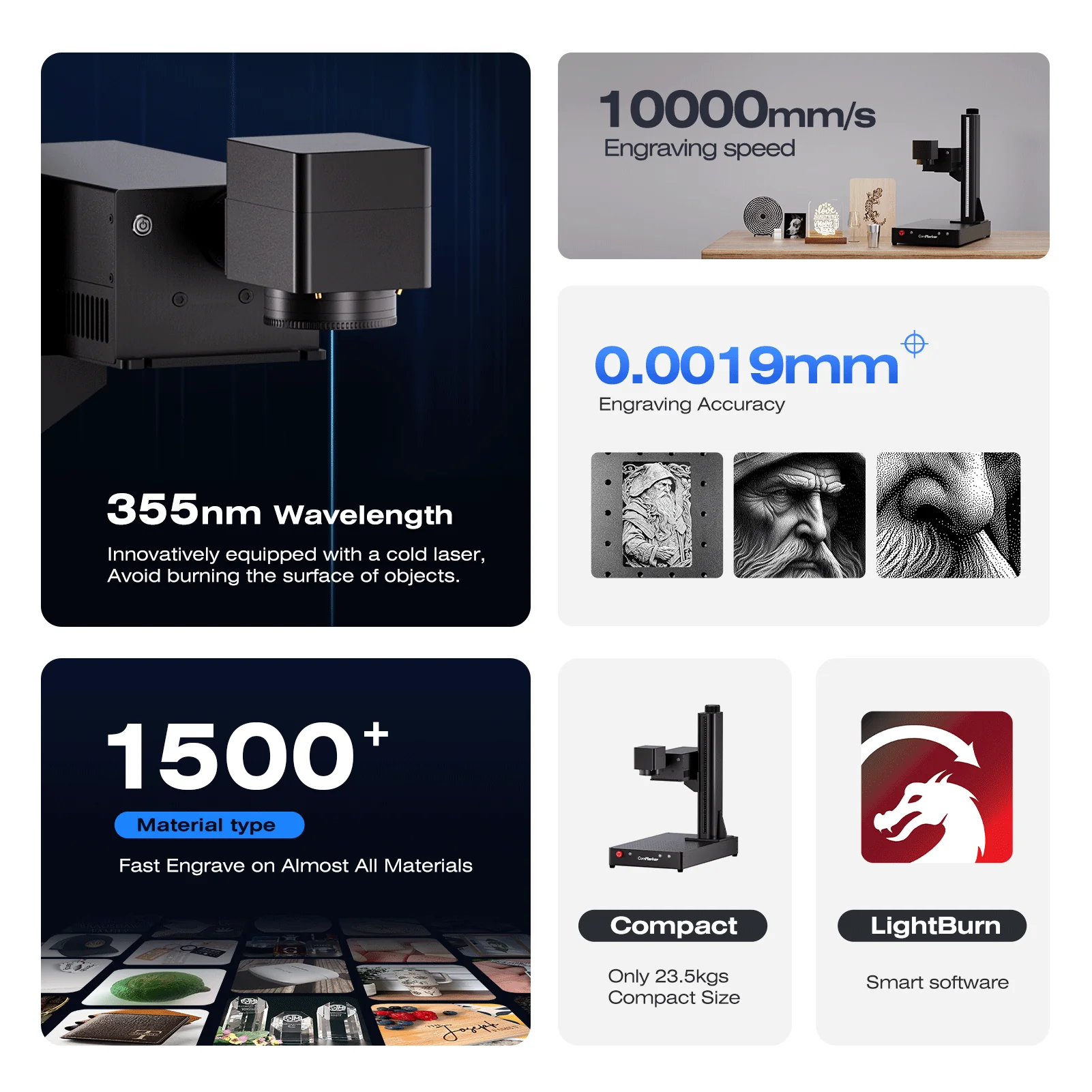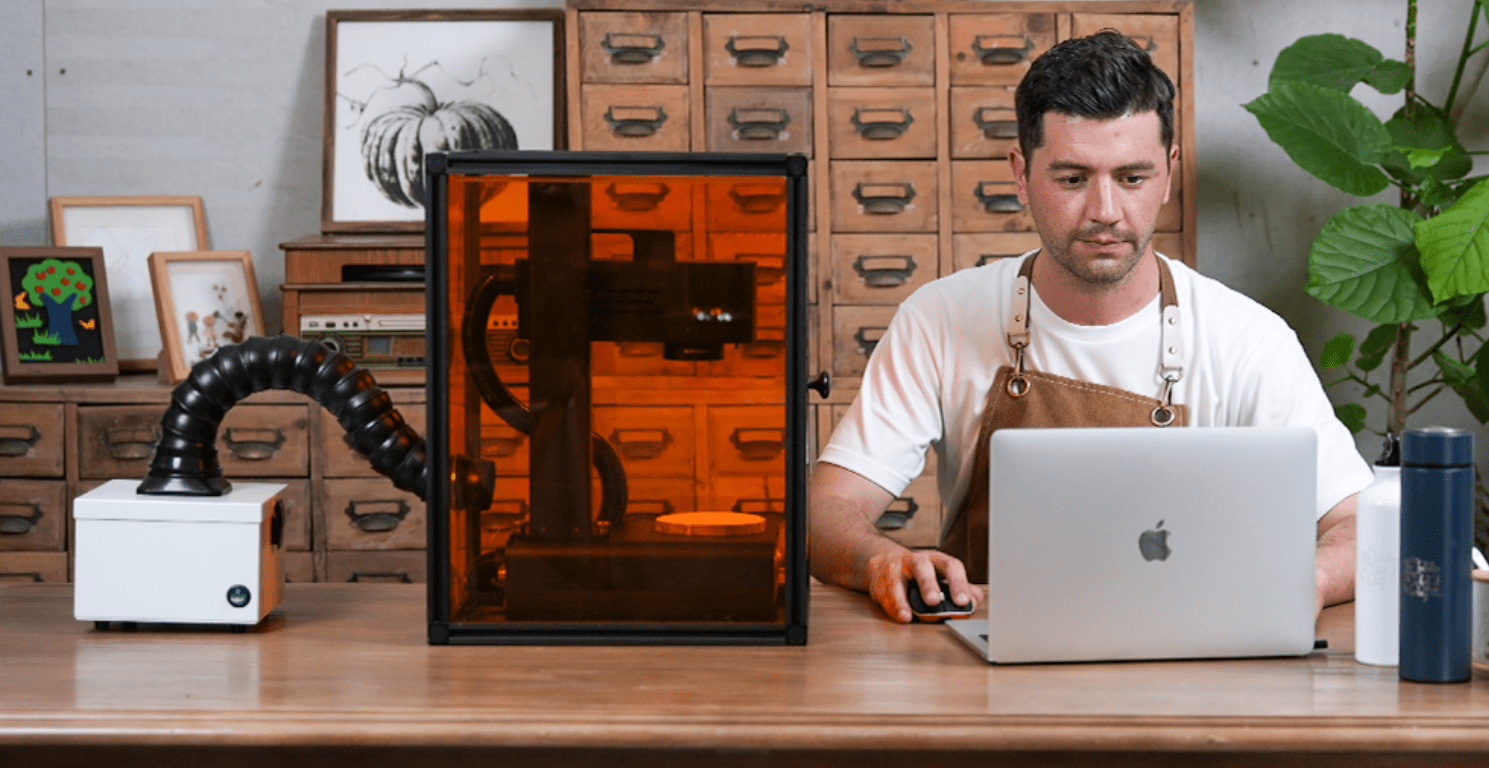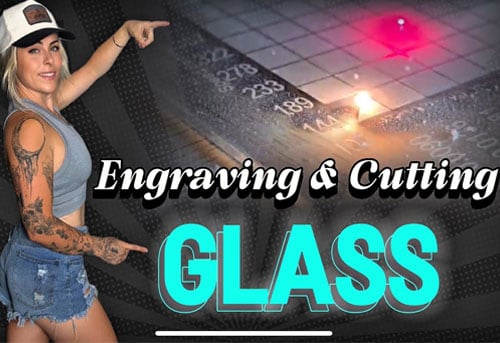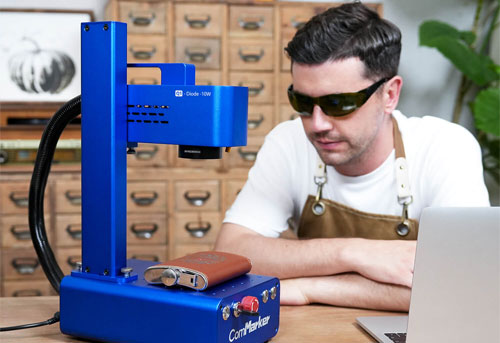If you’re looking for a laser engraver that handles a wide range of materials, UV laser technology is hard to beat. The ComMarker Omni 1 series, available in both 5-watt and 10-watt versions, offers impressive results whether you’re engraving plastics or cutting through glass.
But if you’re wondering which model is right for you, this post shares my hands-on experience using both machines on a variety of materials—including wood, raw aluminum, stone, PCBs, and glass.
Let’s get into the details.
Why UV Lasers Stand Out in the Laser Engraver Market
With a 355nm wavelength and photochemical ablation, UV laser engravers can mark and cut materials with minimal heat, making them ideal for applications that demand precision without damage. Whether you’re engraving metals, plastics, ceramics, or glass, UV lasers create sharp, clean marks.
Having tested both the 5W and 10W ComMarker Omni models in my workshop, I can say this: if you care about versatility, both are strong choices—but the performance gap shows up in specific use cases.

Wood Engraving and Cutting Test: More Power, More Depth
One material that surprised me was wood. I expected charred edges—but UV lasers produce deep, clean engravings with barely any burning.
I tested both laser engravers using the same settings on 4mm poplar plywood. The 10W model clearly carved deeper, faster, and with better contrast. It made clean cuts in far fewer passes. If you’re planning a project with lots of wooden components, the 10W laser could save you serious time.

Deep 3D Engravings: Which Laser Engraver Goes Further?
To test 3D engraving capabilities, I ran 24 passes of a design on both models. The 10W ComMarker Omni reached a depth of 5.5mm—almost twice as deep as the 5W. Both handled cleanup passes well, but the 10W clearly excelled at creating layered depth fast.

Aluminum Engraving: Why Power Really Matters
Aluminum is a tough material to engrave, and here’s where the laser engraver’s wattage becomes critical.
The 10W model offered a much deeper and cleaner result in fewer passes. The 5W Omni still got the job done, but it required four times the time and effort to match the depth and clarity.
If you’re working with raw aluminum often, the 10W laser is a clear winner.

Can a UV Laser Engraver Handle Stone?
Surprisingly, yes. Both models did well on natural and polished stone. The 10W unit engraved faster, but the 5W Omni wasn’t far behind. When I adjusted the passes and speed, even the 5W model engraved deeply and clearly into river stones and tile.
Earlier I thought UV lasers couldn’t engrave certain types of stone—but that was due to incorrect settings. With the right adjustments, both machines handled the job well.

PCB Etching with a Laser Engraver? Yes!
Both the 5W and 10W Omni UV lasers can etch copper from FR4 PCB boards. The 10W laser did it faster and deeper, making it better suited for tasks like micro-drilling or trace cutting. That said, even the 5W machine is more than capable for light PCB work.

Glass Engraving: Both Models Shine (Literally)
UV lasers work beautifully on glass. Whether you’re engraving the surface or embedding text into thick glass, both laser engravers performed well.
Using a 70mm lens, I engraved text into a glass medallion. The 5W model produced results similar to the 10W, just slower. For curved glass (like wine glasses), both machines had comparable depth—mainly because the 5W was slightly better focused during testing.
Even better? With enough passes, both models can cut cleanly through glass. This opens up some seriously cool possibilities for custom gifts or décor.

Stainless Steel: Can a UV Laser Engraver Anneal It?
Short answer: yes. But there’s a catch.
In my tests, the 5W Omni produced smoother black marks and even some color effects. The 10W was harder to dial in because of its higher minimum power. When I defocused the 10W by 10mm, results improved drastically.
If you’re planning to anneal stainless steel for contrast or color, the 5W might actually be easier to fine-tune—but both are capable with some adjustments.
Which UV Laser Engraver Should You Choose: ComMarker Omni 5W vs. 10W?
If you’re looking for a laser engraver that handles a w…
Which Laser Engraver Should You Choose?
The ComMarker Omni 10W UV laser engraver offers clear advantages in speed, depth, and versatility. If you’re working with metals, need to cut glass, or just want to speed up production, it’s the better option.
But the 5W model is no slouch. For hobbyists, small shops, or lower-volume projects, it’s an affordable and highly capable alternative. It can match the 10W’s results—it just needs more passes and time.
Whichever model you choose, both open up an incredible range of engraving possibilities with UV laser technology.

